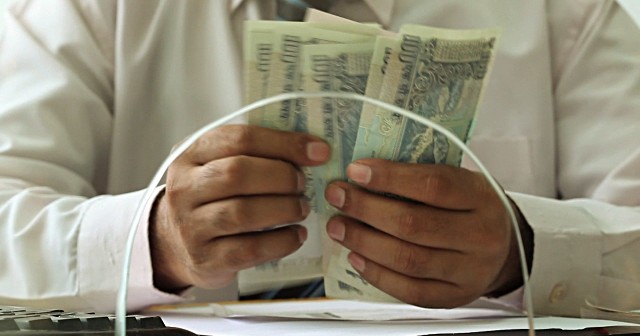The Indian government’s shock demonetisation move is great news for investors waiting for India’s jump on the global transparency scales, says India Inc. CEO Manoj Ladwa.
India just became a much easier place to do business in. Prime Minister Narendra Modi’s shock announcement of the withdrawal – or demonetisation – of Rs 1,000 and Rs 500 notes has been variously described as a surgical strike against black money, as the PM’s way of getting back at critics, or, perhaps more correctly, as arguably the biggest economic reform since the Indian economy was opened up to market forces in 1991.
Henceforth, foreign investors, too, will find it easier to deal with the Indian “system” as the increased transparency and reduced corruption will improve the ease of doing business. India currently ranks a poor 76th in Transparency International’s Corruption Perception Index. Demonetisation will definitely help the country improve its ranking by a considerable margin.
The potential impact of the announcement earlier this week could possibly be greater than the Goods and Services Tax (GST), which is expected to roll out on April 1 next year.
How? Let’s do some simple math. There is about Rs 17 lakh crore ($255 billion) of currency in circulation in India. Of this, about 80 per cent is made up of the high value Rs 500 and Rs 1,000 notes. That’s about Rs 13.6 lakh crore ($204 billion).
Economists and analysts have calculated that half of this amount, or about $102 billion, is black money or money on which taxes have not been paid. They expect that the Modi government’s so-called “surgical strike” on black money will drive 70-75 per cent of this, or $71-76 billion, permanently out of circulation.
Since every rupee in circulation is a liability of the Reserve Bank of India (RBI) and, by extension, the Government of India, this extinguishing of this huge amount, which is worth about one year’s government borrowings, is therefore, in effect, a disguised stimulus package that actually helps the government’s fiscal position.
Bankers expect this to lead to an up to 100 bps (100 bps = 1 percentage point) cut in lending rates over the next one year, giving a boost to the banking sector. This will almost definitely provide a huge boost to economic activity and lead to greater transparency and increased ease of doing business.
Lower interest rates and the expected increase in liquidity as a result of the lower government liability are likely to reduce some of the stress on India’s banking system, which is struggling with high levels of non-performing assets (NPAs) as some stalled projects get back on track.
Then, the cash floating around the system will also drop from about 12 per cent of GDP to 8-9 per cent, bringing it closer to the levels of the developed economies where this ratio is about 4-5 per cent.
This will lead to more system-driven decision making, a marked change from the past when underhand cash dealings often played a big part in business.
Demonetisation and the consequent reduction in corruption is also expected to lead to smoother customs clearance procedures, which many Indian and foreign investors now consider a major pain point in the Indian business eco-system. This is expected to improve India’s score and rank in next year’s Corruption Perception Index.
Despite so many positives, the economy will have endure some short-term discomfort because a lot of business – some estimates put it at 20-25 per cent – in India is conducted in cash. The real estate sector, jewellery and construction sectors are the ones that will be worst affected.
The realty sector, which has been facing a slowdown because of high interest rates and the reluctance of developers to cut elevated prices, will, as a result of the crackdown on black money, see a fall in prices. But in the long run, an expected fall in interest rates, will drive up demand after a lag of six to 12 months.
This, in turn, will lead to an upturn in demand for steel, cement and more than 200 other sectors that are directly or indirectly linked to the real estate and construction sector.
Then, the extinguishing of almost a third of the value of currency in circulation in India is expected to provide a fillip to digital, card-based or cheque-based transactions, which will increase transparency, reduce corruption and drive up both government revenues and GDP estimates as a large part of the unaccounted-for economy, which currently escapes both the tax net and GDP calculations, will come over-ground. PM Modi’s move will also, at one go, strike a blow to the terrorist and hawala networks that thrive on back and counterfeit money and also hit at the very heart of the dirty money that funds several politicians across India.
PM Modi’s move will also, at one go, strike a blow to the terrorist and hawala networks that thrive on back and counterfeit money and also hit at the very heart of the dirty money that funds several politicians across India.
Coupled with GST, which again, is expected to lead to greater transparency as every transaction will leave a digital trail making it difficult to escape the tax net, the dramatic demonetisation initiative will boost Brand India and the resultant increase in revenues – both as a result of increase transparency as well as from a pick-up in economic activity – will allow finance minister Arun Jaitley the headroom he needs to cut corporation tax rate to 25 per cent as he has promised.
With this one move, the Modi government has managed to kill several birds with one stone. Readers living outside India will be able to gauge its impact and shock value from the fact that the demonetisation of Rs 1,000 and Rs 500 even managed to knock Donald Trump’s stunning win in the US presidential elections to the second lead position on many Indian television channels and newspapers.
Now, that’s what I call shock and awe!







